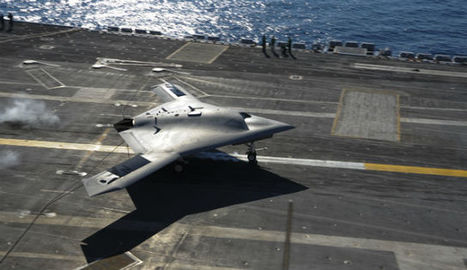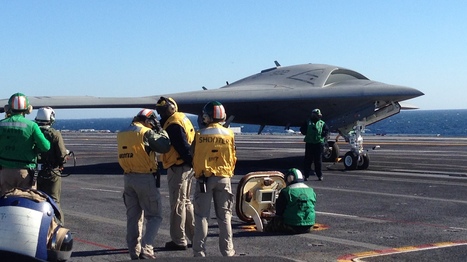The Navy's unmanned X-47B returned to carrier operations aboard USS Theodore Roosevelt (CVN 71) Aug. 17 and completed a series of tests, operating safely and seamlessly with manned aircraft. Building on lessons learned from its first test period aboard TR in November 2013, the X-47B team is now focused on perfecting deck operations and performing maneuvers with manned aircraft in the flight pattern.
The first series of manned/unmanned operations began this morning when the ship launched an F/A-18 and an X-47B. After an eight-minute flight, the X-47B executed an arrested landing, folded its wings and taxied out of the landing area. The deck-based operator used newly developed deck handling control to manually move the aircraft out of the way of other aircraft, allowing the F/A-18 to touch down close behind the X-47B's recovery.
This cooperative launch and recovery sequence will be repeated multiple times over the course of the planned test periods. The X-47B performed multiple arrested landings, catapults, flight deck taxiing and deck refueling operations.



 Your new post is loading...
Your new post is loading...









